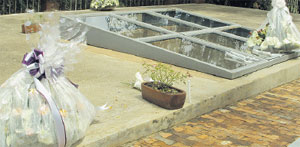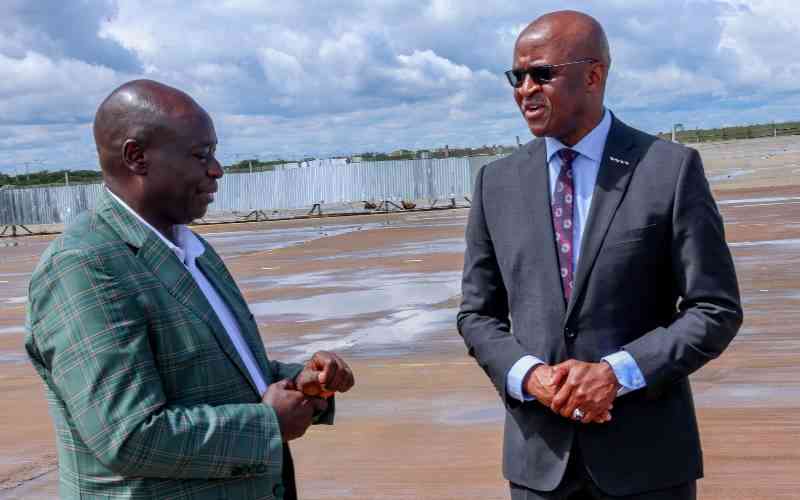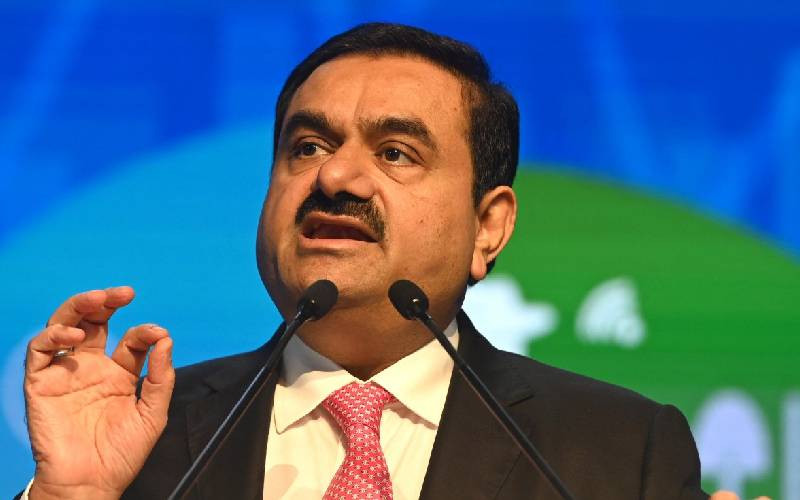Harold Ayodo
It was shortly after 2pm on Monday when the pilot announced the flight from Nairobi was about to land in Kigali, Rwanda, the cleanest city in Africa.
Though I had heard that a recent United Nations Habitat for Humanity poll had nominated Kigali as the cleanest city in Africa, I had dismissed it just as an exaggeration.
 |
Flowers at the genocide museum in Kigali.
|
He says the women also love cooking; believing the traditional saying that the way to a man’s heart is through the stomach.
Two most common foods are plantains and beans, which are often boiled together. Another staple diet is sorghum grain used to cook porridge and to brew beer. Other common traditional foods are Irish potatoes, sweet potatoes, cassava and maize.
Memorial Centre
And although nyama choma (roast meat) is popular in Kenya, only wealthy Rwandans eat meat often and down it with Amstel beer.
"The most common meat is goat which, is usually barbecued over a charcoal burner… beef is the most valued," Ingabire says.
There are tourist attraction sites such as the Kigali Memorial Centre that is a must-visit for insights into the worst genocide in history. The memorial centre, locally known as the genocide museum, includes three permanent exhibitions, the largest of which documents the 1994 genocide. There is also a children’s memorial, and an exhibition on the history of genocide violence around the world.
The education centre, memorial gardens and national documentation centre of the genocide all pay tribute to those who perished. The mass grave where 258,000 victims of the genocide were buried is also within the compound of the museum.
Kigali Memorial Centre guide officer Serge Rwigambi says the facility is among the main attractions.
"We receive an average of 300 visitors on a slow day at the genocide museum most of who are moved by the accounts of the toddlers," Rwigambi says.
Anti-genocide laws
Rwigambi says most visitors, especially women, break down as they hear what innocent children went through in the genocide.
Stay informed. Subscribe to our newsletter
"Children are among the 258,000 victims buried in mass graves here within the compound of the memorial centre," Rwigamba says.
Rwigamba says former US Presidents Bill Clinton and George Bush Jr are among the high profile guests who were moved by the accounts of the genocide.
The museum acts as a memorial for those who died in the genocide and also as a place for the people of Rwanda to mourn the loss of their loved ones. It is the only place where visitors can exclusively get information on the mass killings, as most locals are tight lipped due to anti-genocide laws.
The Government passed laws to contain the dissemination of genocide ideology in a bid to avoid a repeat of the tribal flare-ups that led to the genocide. As we landed at Jomo Kenyatta International Airport, the flight attendants did not warn us against alighting with polythene bags and plastics.
 The Standard Group Plc is a
multi-media organization with investments in media platforms spanning newspaper
print operations, television, radio broadcasting, digital and online services. The
Standard Group is recognized as a leading multi-media house in Kenya with a key
influence in matters of national and international interest.
The Standard Group Plc is a
multi-media organization with investments in media platforms spanning newspaper
print operations, television, radio broadcasting, digital and online services. The
Standard Group is recognized as a leading multi-media house in Kenya with a key
influence in matters of national and international interest.
 The Standard Group Plc is a
multi-media organization with investments in media platforms spanning newspaper
print operations, television, radio broadcasting, digital and online services. The
Standard Group is recognized as a leading multi-media house in Kenya with a key
influence in matters of national and international interest.
The Standard Group Plc is a
multi-media organization with investments in media platforms spanning newspaper
print operations, television, radio broadcasting, digital and online services. The
Standard Group is recognized as a leading multi-media house in Kenya with a key
influence in matters of national and international interest.








